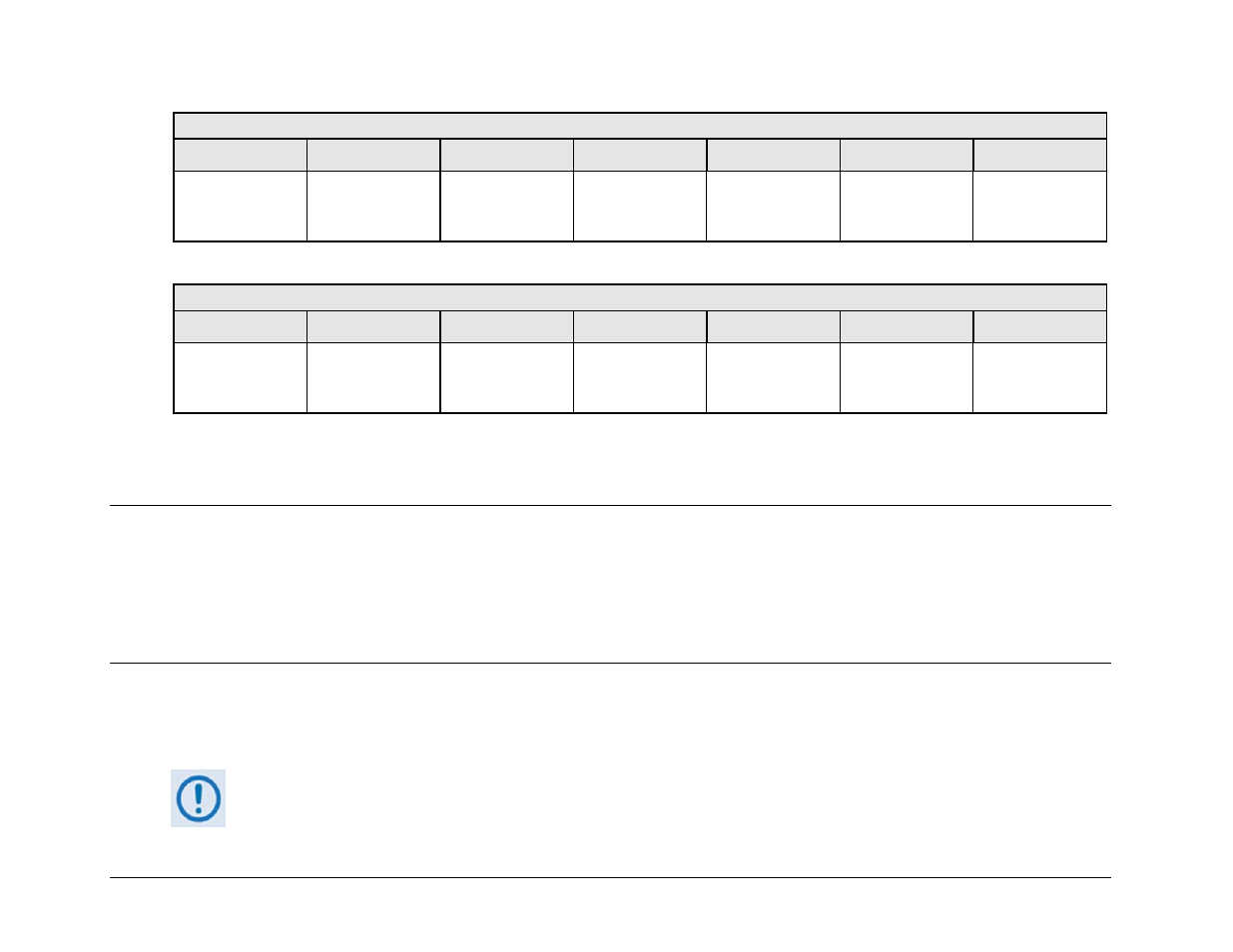1 start of packet, 2 target address – Comtech EF Data CDM-750 User Manual
Page 184

CDM-750 Advanced High-Speed Trunking Modem
Revision 2
Serial-based Remote Product Management
MN-CDM750
7–4
Controller-to-Target (Issued Command or Query)
Start of Packet
Target Address
Address Delimiter
Instruction Code
Code Qualifier
Optional Arguments
End of Packet
<
ASCII code 60
(1 character)
0000 (default)
(4 characters)
/
ASCII code 47
(1 character)
(3 characters)
= or ?
ASCII codes 61 or 63
(1 character)
(n characters)
Carriage Return
ASCII code 13
(1 character)
Packet Example:
<0000/TMC=10[cr]
Target-to-Controller (Response to Command or Query)
Start of Packet
Target Address
Address Delimiter
Instruction Code
Code Qualifier
Optional Arguments
End of Packet
>
ASCII code 62
(1 character)
0000 (default)
(4 characters)
/
ASCII code 47
(1 character)
(3 characters)
= or ?
ASCII codes 61 or 63
(1 character)
(n characters)
Carriage Return
ASCII code 13
(1 character)
Packet Example:
>0000/TMC=[cr][lf]
Detailed description of the packet components follow.
7.4.2.1 Start of Packet
• Controller‐to‐Target: This is the character ‘<’ (ASCII code 60).
• Target‐to‐Controller: This is the character ‘>’ (ASCII code 62).
The ‘<’ and ‘>’ characters indicate the start of packet. They may not appear anywhere else within the body of the message.
7.4.2.2 Target Address
• In EIA‐232 applications, this value is set to 0000.
• In EIA‐485 applications, the permissible range of values is 0001 to 9999.
The Target Address designates the packet destination. The Controller does not have its own address. After the
Controller sends a packet with the designated Target Address, the Target responds to the Controller, using this
same address, to indicate the source of the packet.